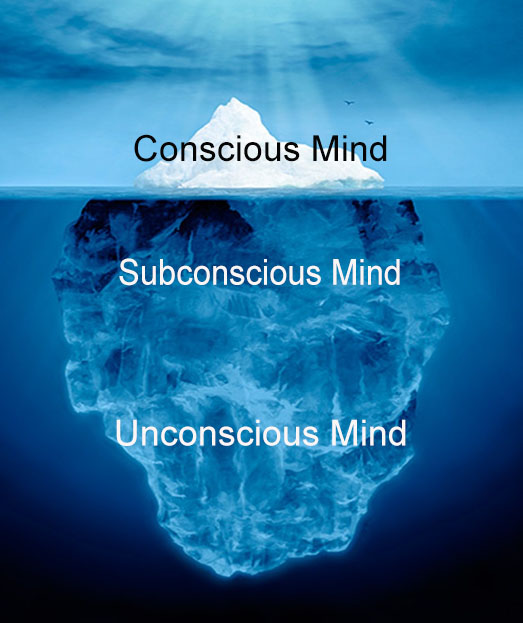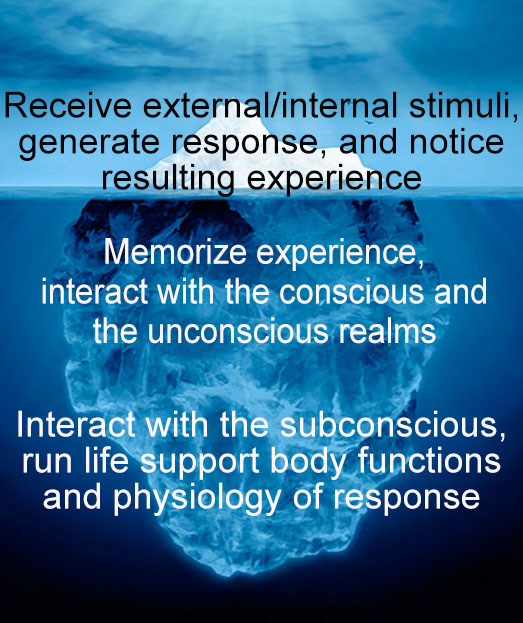|
Figure-1 shows the iceberg metaphor for the human mind: only a small part visible above the surface of the ocean with the rest partially visible or totally invisible. The visible part represents the conscious realm of the mind. The partially visible part immediately below the surface of the ocean represents the sub-conscious realm while the totally invisible bottom part deep below the surface represents the unconscious realm. Ordinarily, the realms constantly interact with their neighbours except when we are in deep sleep. |
|
Figure-2 shows the content of the various realms of the human mind. The conscious mind perceives the external environment. It can also recall the experience of an event from the subconscious. In addition, the subconscious intrudes and imposes on the conscious making it aware of the experience of a past event. The subconscious may be thought of as the storehouse of past memories which is affected by the state of the unconscious realm. Lastly the unconscious realm is primarily comprised of genetic inheritance from both the parents, prenatal biochemical inheritance from the mother and effects of the interactions with the subconscious. |
|
Figure-3 indicates the functions of the realms of the mind. The conscious realm is meant to receive its content as input from the objective external world or from the subjective internal world referred to as the subconscious mind. Input from the subconscious may be in the form of a voluntary recall by the conscious mind or involuntary incursions into the conscious. Each instance of input into the conscious elicits a response which is initiated by the conscious mind. The subconscious mind is meant to act as the storehouse of memories of past experiences and influence the conscious and the unconscious realms with its memories. Finally, the role of the unconscious is to run the autonomous body functions for survival and somatic actions to act out our response to the stimuli from the external and the internal worlds. |


